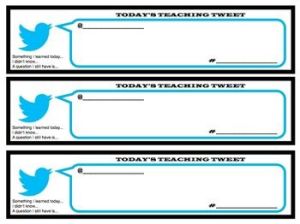If you had just 5 minutes, what teaching tips would you share with another teacher?
These ideas may prove useful for revision and concentration too …
During the examination period, it is all-too-easy for teachers and students to lose some creativity. This is often the first thing to be ‘binned’ when the pressure in the classroom increases to absorb knowledge and retain facts – albeit vital for learning – for examinations.
1. Question boards:
Students often have many questions. Why not create a question board or a cardboard box which students can attach post-it notes to? Ask them to drop in any queries they may have throughout the lesson.

Questioning Tougher Questions:
• to clarify and assess understanding
• to challenge assumption
• to evidence for argument
• to gather viewpoints and perspectives
• to predict implications and consequences
• to question the question.
Questions To Avoid:
A poorly asked question leads to: students calling out; closed responses; incorrect answers; surface-learning and less deeper knowledge required.
1. Let me ask you all, what is the … (asks for everyone to answer; perhaps call out …)
2. Can anyone tell me … (gives the option to volunteer)
3. What does this do … [holds object up] (most hands go up in the classroom)
4. Any leading question which suggests its own answer …
- Create a catchphrase:
Don’t be afraid to sound like a parrot, or a broken record-player. 
You can use this to your advantage by generating your own interesting slogans. Do not be afraid to repeat instructions, expectations and your vision for learning time and time again. This may be unique to you or your class. For example: “3,2,1 all eyes on me.”
- Classroom roles:
Assign a role for each student within the class. This offers students a chance to develop confidence, purpose and leadership responsibilities.
- Student A: reading out key questions
- Student B: handing out scissors/glues etc. This could be on a rota system, changing each week.
- Speaking tool:
Have an object agreed by you and your class. This object defines which students can (only) speak during debates when holding the object. E.g. as ball.
- Exit cards:

Provide students with an ‘exit ticket’ which they must complete to leave the classroom: ‘I have learned today…’; ‘I need help with …’ Good examples include versions designed as a Twitter (tweet) card.
From TeachersToolKit
